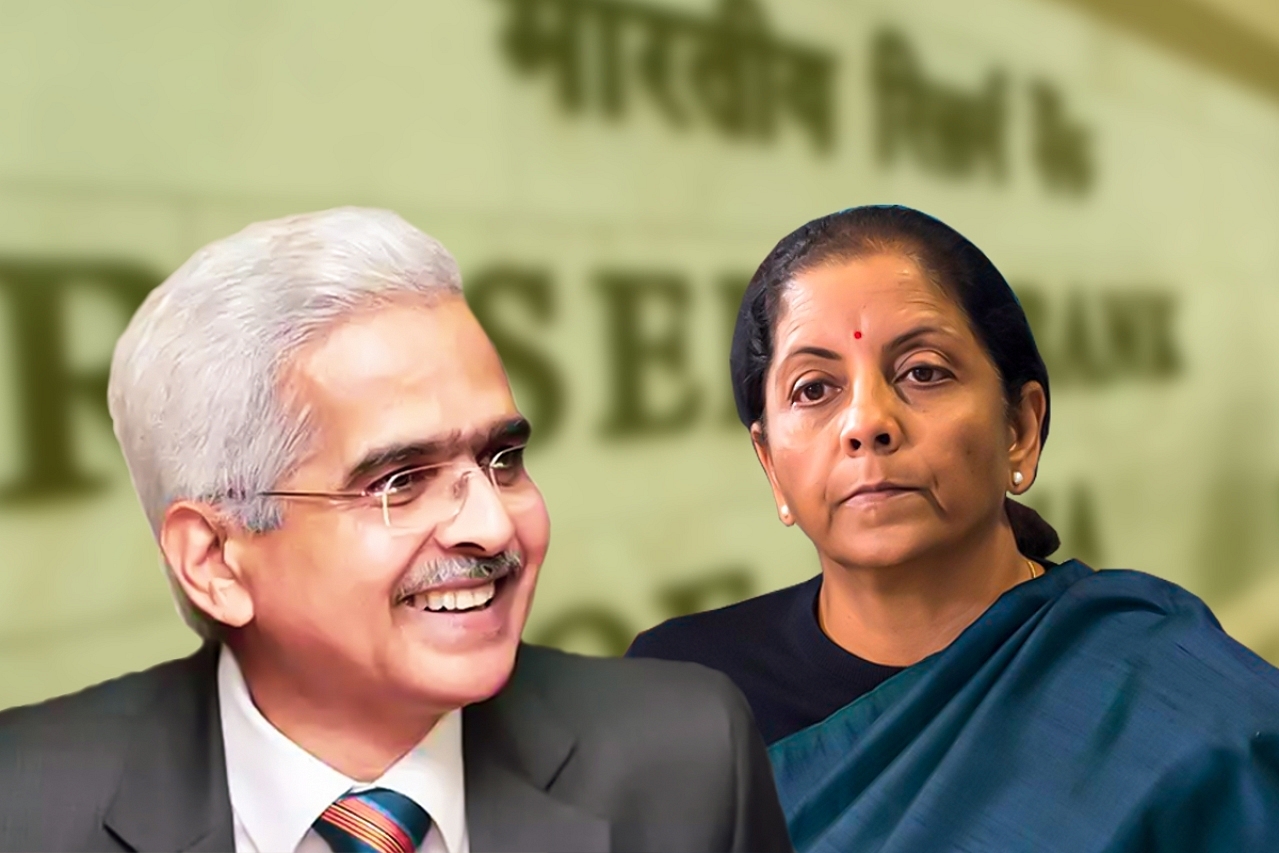Economy
Why There Should Not Be Any Hesitation In Monetising A Part Of The Fiscal Deficit
- We should be more worried about the consequences of not doing enough — rather than being worried about consequences of undertaking bold fiscal action to assist recovery.

Finance Minister Nirmala Sitharaman and RBI Governor Shaktikanta Das.
One of the key challenges posed by the lockdown has been for the government finances. Government obtains its revenues from taxes, which depends on economic activity.
Lockdowns meant limited economic activity which implied that government revenues came under a severe stress.
On one side, while government saw its revenues reduce substantially, on the other, it had to increase its expenditure — first to upgrade the healthcare infrastructure in the country and later to provide relief to businesses and households from the impending economic stress.
Both of these were essential as swifter recovery would be the key for government revenues returning to the pre-Covid-19 levels.
At this junction, it is important to understand that government essentially borrows money to finance its deficit.
These borrowings are essentially from general public — and thus, they come mostly from domestic savings.
Under the present circumstance, government will end up borrowing a substantial amount as it will see a significant shortfall in its tax revenues.
It cannot cut its expenditure or raise taxes because both will be suicidal.
This leaves with them the only option to borrow with the intention of reviving economic growth — and subsequently, their revenues.
There are concerns regarding high borrowings which could raise interest rates, and since there are only a limited amount of domestic savings, high government borrowings could leave little credit for the private sector.
On the other hand, there is the option of monetisation of the deficit — that is, the Reserve Bank of India (RBI) purchases the government bonds and gives it the money it needs to cover its deficit.
It essentially means creating money as against government securities and giving it to the government to meet its expenditure.
The reason why many are sceptical of monetisation is that it comes with a risk of high inflation and currency depreciation — often a general deterioration in macroeconomic fundamentals are also a consequence of the same.
Many had cautioned the government against monetisation until very recently. However, there has emerged a near consensus that monetisation of a part of the deficit is the only option available.
Therefore, to meet the expenditure commitments and finance the economic stimulus, government will have to combine borrowings from households with deficit monetisation in a manner that maximises economic growth while leaving adequate credit for the private sector.
It is, important to understand why monetisation of the deficit is unlikely to come with the conventional costs in the form of inflation or deterioration in macroeconomic fundamentals.
For starters, inflation is either driven by demand factors — that is, we demand more than what is being produced which pushes prices upwards, or there is an increase in the cost of production.
In the present case, there are supply disruptions due to lockdowns for several items which have contributed to a higher demand for them resulting in higher prices. But on the overall, when there have been wage cuts, we should expect a lower level of demand for items.
That is, inflation will not be a problem going forward as people will lack the purchasing power to get back to the same level of consumption until economic activity recovers.
This explains why there is a possibility to monetise a part of the deficit without any inflationary risks in the present situation.
The other issue is to do with macro-economic imbalances, particularly in terms of value of exchange rates and current account movements due to international trade.
However, this holds true when India is one of the few countries which monetises its deficit and prints additional currency. The key here is that nearly every country in the world will end up monetising their deficits — and therefore, the possibility of any adverse impact reduces.
Moreover, markets, investors and institutions have well recognised that monetisation has become inevitable.
Consequently, we should be more worried about the consequences of not doing enough — rather than be worried about consequences of undertaking bold fiscal action to assist our economic recovery.
The question, that thus emerges is that if inflation and macro-fundamentals are not a constraint for monetisation, then what determines how much we monetise?
It is important to appreciate that while both are not a constraint, however, going overboard with fiscal action can seriously damage our macroeconomic fundamentals such as inflation, deficits (fiscal and trade), exchange rate etc over the medium term.
Therefore, the key is to balance medium term stability with the present crisis. A 2-3 per cent of gross domestic product (GDP )should be a safe bet for the government, over and above what has been announced under the Atma Nirbhar package as a fresh stimulus to be financed by monetisation of the deficit.
Front-loading of the stimulus would be the key to accelerating the recovery process — and therefore, one hopes that both the North Block and the Mint Street can come together to deliver what is needed, sooner, rather than later.
Introducing ElectionsHQ + 50 Ground Reports Project
The 2024 elections might seem easy to guess, but there are some important questions that shouldn't be missed.
Do freebies still sway voters? Do people prioritise infrastructure when voting? How will Punjab vote?
The answers to these questions provide great insights into where we, as a country, are headed in the years to come.
Swarajya is starting a project with an aim to do 50 solid ground stories and a smart commentary service on WhatsApp, a one-of-a-kind. We'd love your support during this election season.
Click below to contribute.
Latest